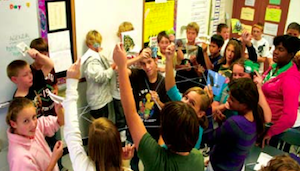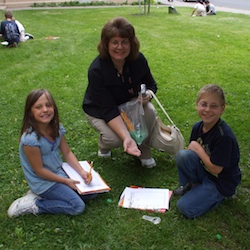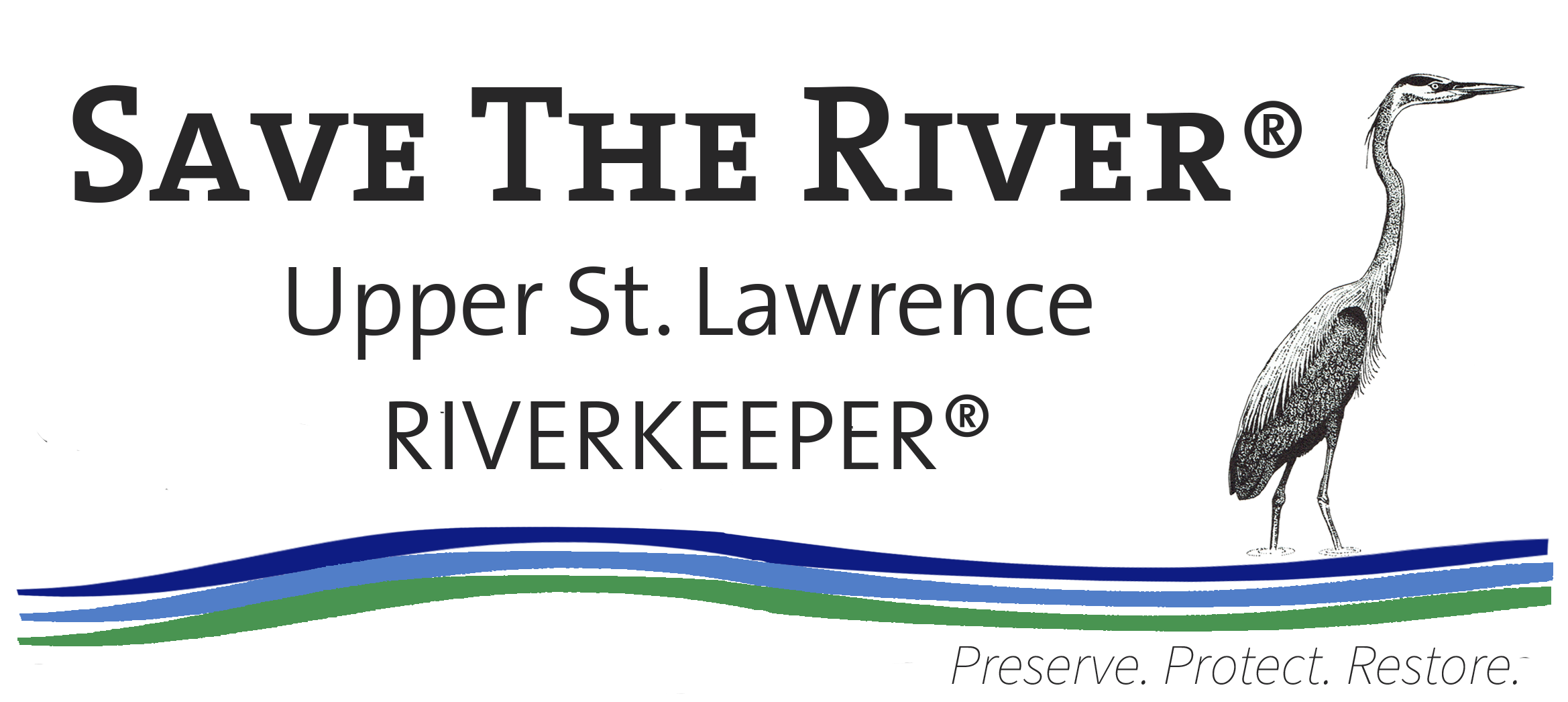Save The River’s In the Schools Program is partnering with teachers from school districts up and down the shores of the St. Lawrence River. Below are some examples of the projects that they have completed with their students and continue to implement on an annual basis. If you are interested in participating in Save The River’s In the Schools Program we’d love to hear from you.
Maria Mesires 7th Grade, Case Middle School, Watertown, NY
 Seventh graders at Case Middle School in Watertown, NY are learning all about invasive species in the St. Lawrence River through Save The River’s In the Schools Program. Their teacher Maria Mesires has created a River-based curriculum that incorporates the issue of invasive species into her classroom ecology unit, educating students about a local issue that they can really understand.
Seventh graders at Case Middle School in Watertown, NY are learning all about invasive species in the St. Lawrence River through Save The River’s In the Schools Program. Their teacher Maria Mesires has created a River-based curriculum that incorporates the issue of invasive species into her classroom ecology unit, educating students about a local issue that they can really understand.
Through her unit, Ms. Mesires teaches her students about the native species that inhabit the St. Lawrence River and how the interaction of these species in their environment makes up the River’s ecology. Once students grasp this idea, Ms. Mesires adds invasive species into the mix. Students learn about specific invasive species and how each will affect the River’s native species, and the ecology of the River as a whole. In order to bring the lesson home, Ms. Mesires has the students build a food web with string connecting the students, who represented the native species in the River. From there, invasive species are introduced and students must move the string, disconnecting and reconnecting with the new species. This allows students to see the overall effects of invasive species on the River’s ecology.
Through this project, Ms. Mesires has given students a real life scenario from which to learn, while more effectively translating some of the core concepts of ecology. To learn more about Ms. Mesires project check out her publication in the March 2010 edition of Science Scope.
Keywords: Case Middle School Watertown New York St. Lawrence River Maria Mesires
Posted: February 03, 2011
Related Curriculum Resources
Below are the curriculum units related to this case study. We have provided these units for teachers to take and use in the classroom.
St. Lawrence River Ecology and the Affects of Invasive Species
Students will understand the principle of ecology and the biotic and abiotic factors that influence St. Lawrence River Habitat. Additionally, students will learn about invasive species and how their presence can adversely affect habitats. Students will also discover ways to prevent the introduction of invasive species and preserve native species as well as learn about Save The River and their role in protecting and preserving the St. Lawrence River.
Mary Ellen Carroll, 3rd Grade, Sherman Elementary, Watertown, NY
 Many of the third grade students in Mary Ellen Carroll’s class at Sherman Elementary in Watertown, New York had never heard of a St. Lawrence River muskellunge before last spring. But when their teacher became a part of Save The River in the Schools Program, that started to change. Mary Ellen developed a unit to teach her third graders how to identify muskies, where they live and why this elusive fish is so important as part of the St. Lawrence River ecosystem. As a culminating activity, students colored and painted their own muskie with the distinctive markings of the species, then crafted construction paper weed beds to camouflage their fish as they would be in the River. The project even flowed beyond the classroom walls, when the finished pieces were approved for display in the school gymnasium for all to see. By May, the gymnasium of Sherman elementary looked like a giant muskie aquarium with the hand drawn fish swimming in every direction across the blue wall mats – and the whole school was talking about muskies!
Many of the third grade students in Mary Ellen Carroll’s class at Sherman Elementary in Watertown, New York had never heard of a St. Lawrence River muskellunge before last spring. But when their teacher became a part of Save The River in the Schools Program, that started to change. Mary Ellen developed a unit to teach her third graders how to identify muskies, where they live and why this elusive fish is so important as part of the St. Lawrence River ecosystem. As a culminating activity, students colored and painted their own muskie with the distinctive markings of the species, then crafted construction paper weed beds to camouflage their fish as they would be in the River. The project even flowed beyond the classroom walls, when the finished pieces were approved for display in the school gymnasium for all to see. By May, the gymnasium of Sherman elementary looked like a giant muskie aquarium with the hand drawn fish swimming in every direction across the blue wall mats – and the whole school was talking about muskies!
This project is just one example of what is happening in classrooms throughout the North Country as part of the Save the River in the Schools Program. The program is a partnership between Save The River and local school districts, working together to bring awareness of the St. Lawrence River environment into the classroom. This type of work has long been an organizational priority, according to education committee chair Ann Ward. “Any meaningful changes in community-wide awareness must begin with the young people in that community,” Ward says, “after years of working toward a school program, I am thrilled to see this exciting project materialize.” She also credits the Burt Family’s Fresh Sound Foundation for supporting the project from the beginning. “It takes vision and resources to start something new like this, and the Burts have provided both. We thank them.”
While boosting environmental awareness is one goal of the In the Schools program, just as important is the fact that adding local, relevant content to school curricula can boost academic interest and performance. As this community education program expands and develops, it is Save The River’s hope that we can enhance the educational experience of North Country children, as they learn to appreciate the stunning value of the St. Lawrence River ecosystem.
